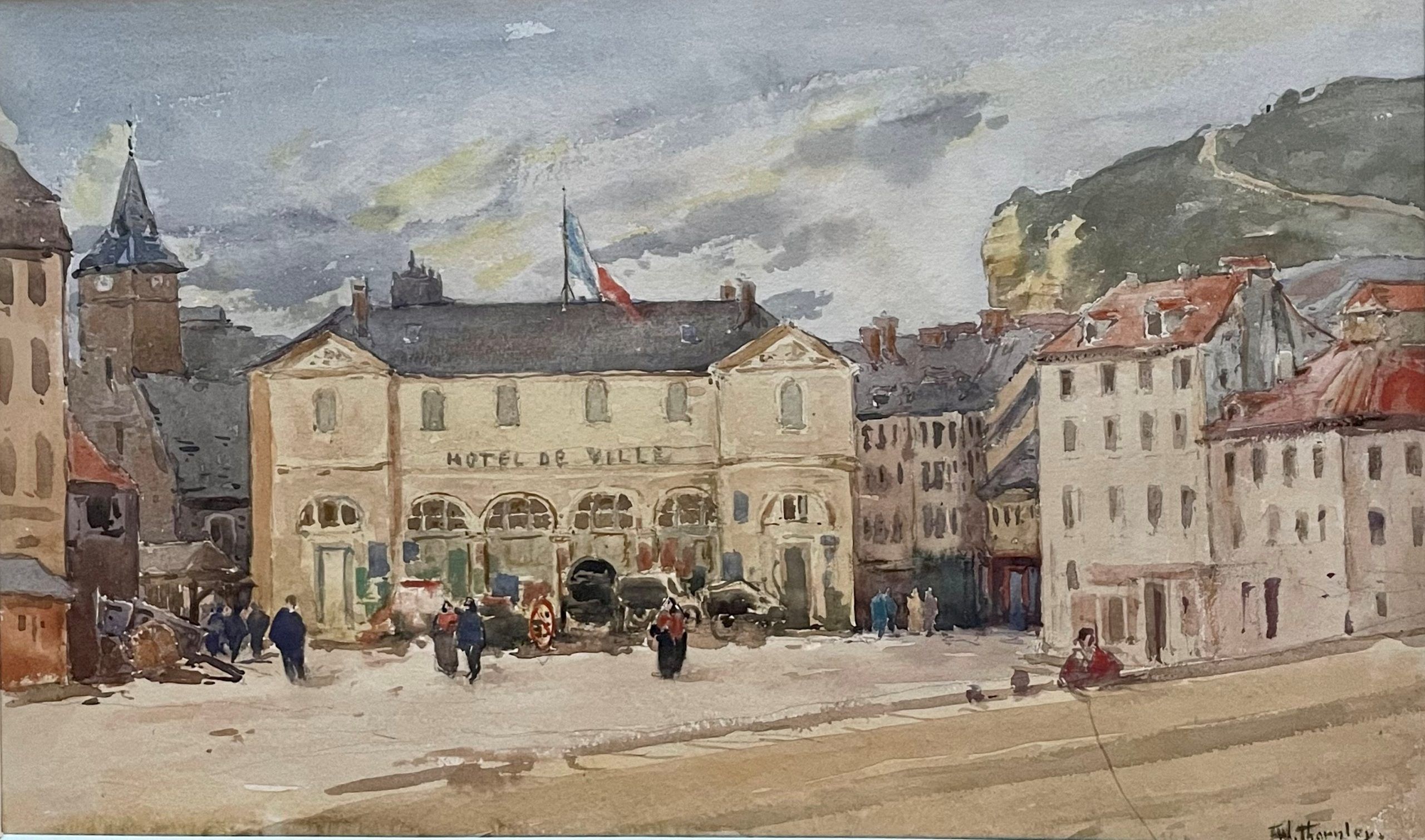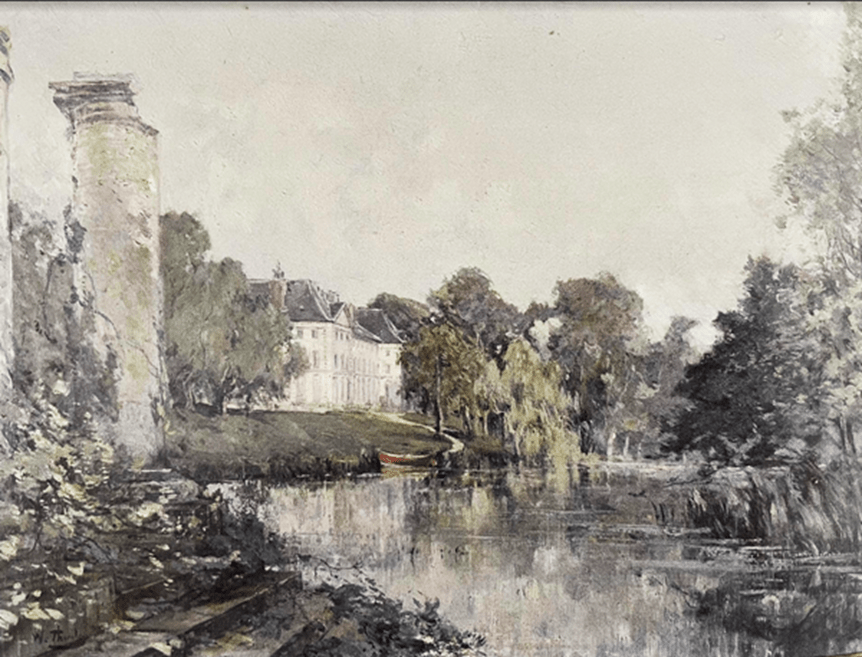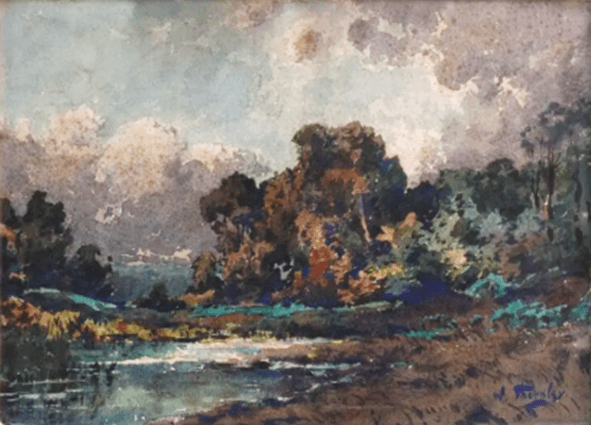L’Hôtel de Ville de Saint-Valéry-en-Caux (76). Aquarelle de 24x40cm. Collection Privée
La localisation d’origine de cette aquarelle (Dieppe), acquise en 2005, était erronée. En réalité, il s’agit de Saint-Valéry-en-Caux.
L’identification exacte du site a été effectuée par Madame Geneviève Roche-Bernard (Conservateur en chef du patrimoine, Conseil départemental du Val-d’Oise, en charge de la gestion scientifique du musée Thornley )
Le titre en façade (Hôtel de ville), n’apparaît pas dans les cartes postales de 1904 et de 1905, mais il apparaît sur une carte postale du 8 août 1909 (source internet / Delcampe) et il n’apparaît plus en 1914. On peut donc raisonnablement situer la réalisation de cette oeuvre entre 1906 et 1914. On aperçoit, au fond et à gauche, la Chapelle de Saint-Valéry-en-Caux, qui jouxte la place du marché. Assez curieusement, cette aquarelle n’a pas été réalisée avec le meilleur coup de pinceau de William Thornley. Les nuages dans le ciel sont à peine travaillés, contrairement à son habitude et la falaise est sommairement aquarellée. Visiblement, il ne s’est pas attardé sur les détails !
William Thornley possédait un terrain à Varengeville, à 12 kilomètres de Saint-Valéry-en-Caux, à côté de Dieppe. Comme Osny se trouvait sur l’axe du chemin de fer Paris-Dieppe, il lui a été facile de se rendre à Saint-Valéry-en-Caux pour y déposer son chevalet. William Thornley réalisa un premier recueil de 25 lithographies de Camille Pissaro (1830-1903) en 1900 (édité chez Hessèle en 108 exemplaires et imprimé par Engelmann à Paris). L’une de ces lithographies (la 8ème planche de l’album) s’intitule « Paysage à Varengeville ». Claude Monet (1840-1923) et Camille Pissaro ont séjourné à Varengeville. Le premier en 1882 puis en 1897, le second en 1899.

L’Hôtel de Ville de Saint-Valéry-en-Caux. Watercolor 24x40cm. Private collection
The original location of this watercolor (Dieppe), acquired in 2005, was incorrect. In reality, it is Saint-Valéry-en-Caux.
The exact identification of the site was carried out by Madame Geneviève Roche-Bernard (Chief Heritage Curator, Val-d’Oise Departmental Council, in charge of the scientific management of the Thornley Museum)
The title on the facade (City Hall) does not appear in the postcards of 1904 and 1905, but it appears on a postcard of August 8, 1909 (internet source / Delcampe) and it no longer appears in 1914. We can therefore reasonably place the creation of this work between 1906 and 1914. We can see, in the background and to the left, the Chapel of Saint-Valéry-en-Caux, which adjoins the market square. Oddly enough, this watercolor was not done with William Thornley’s best brushwork. The clouds in the sky are barely worked, contrary to usual and the cliff is crudely watercolored. Obviously, he didn’t dwell on the details!
William Thornley owned land in Varengeville, 12 kilometers from Saint-Valéry-en-Caux, near Dieppe. As Osny was located on the axis of the Paris-Dieppe railway, it was easy for him to go to Saint-Valéry-en-Caux to leave his easel there. William Thornley produced a first collection of 25 lithographs by Camille Pissaro (1830-1903) in 1900 (published by Hessèle in 108 copies and printed by Engelmann in Paris). One of these lithographs (the 8th plate of the album) is entitled “Landscape in Varengeville”. Claude Monet (1840-1923) and Camille Pissaro stayed in Varengeville. The first in 1882 then in 1897, the second in 1899.



